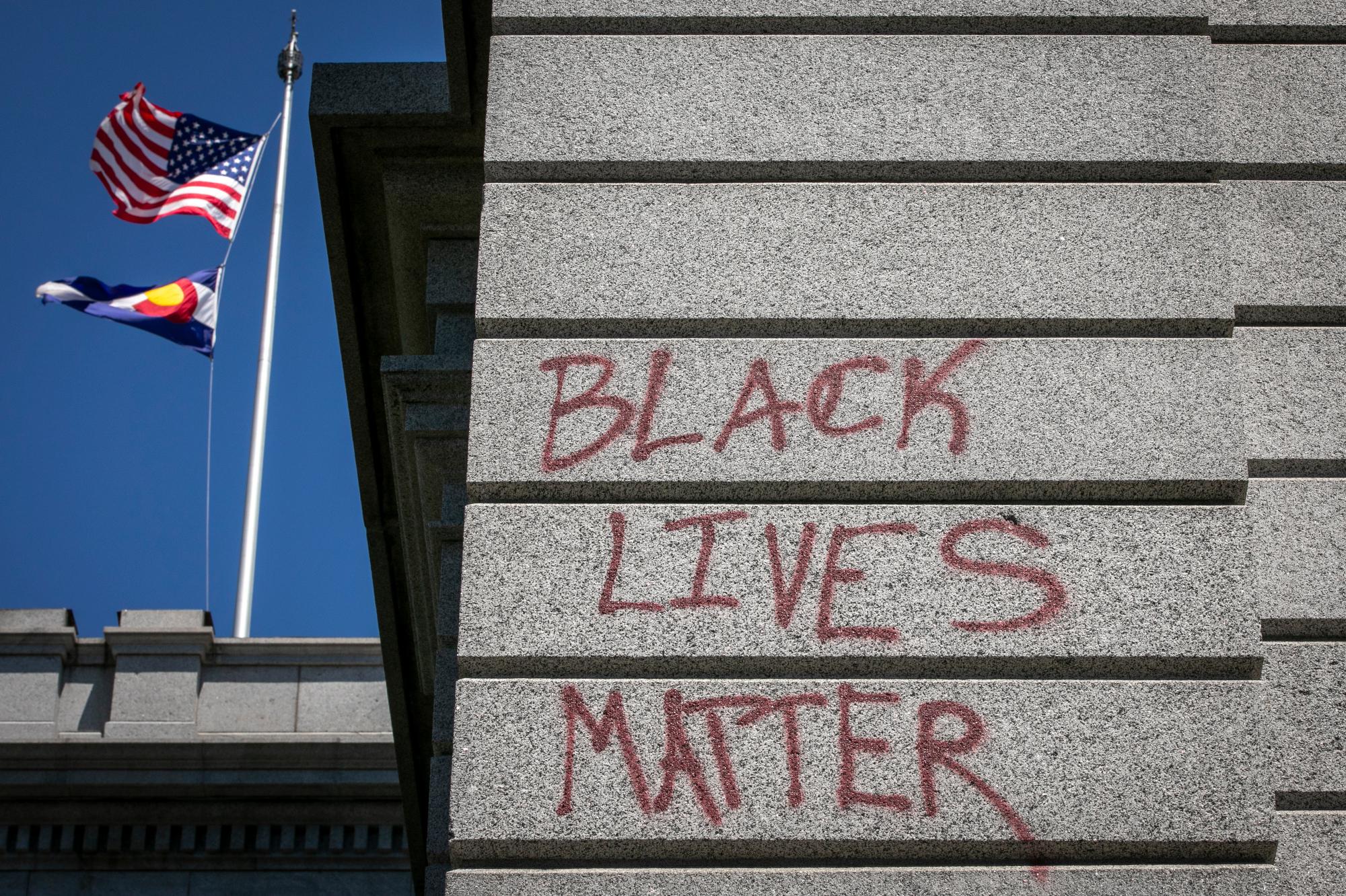
It could take more than $1 million and months of work to erase painted messages and repair damage to doors, windows and other parts of the Colorado State Capitol that have accumulated since the protests against racial injustice began in May.
Crews have been trying to control graffiti on the granite building, but they often find a wall is re-tagged just as quickly as they clean it. The messages include a mix of calls for reform and more vulgar messages about police. "Denver where are you?" read one message in blue.
Last week, contractors tested out lasers and chemicals for potential use on the building. The experiments, which were conducted on sample stone and not the building itself, showed that lasers probably won't do the trick, but chemicals might.
“We have been addressing these issues since day one as they have arisen, but unfortunately, those efforts have largely gone unnoticed as vandalism continued every day for weeks,” said Kara Veitch, executive director of the Department of Personnel & Administration.
“We are dedicated to returning these historic buildings to a pristine state, but we need to do so judiciously to ensure we don’t further damage the buildings. We are committed to being responsible with the taxpayers’ dollars while doing this job the right way.”
Government contractors have also erected a fence around the building, with state officials saying it's required by federal safety regulations to protect the work site. The rehab job could continue into the winter, and state officials expect the cost to grow past the initial $1 million estimate.
The state government will pay for the first million dollars of repairs, largely with its self insurance fund, according to Doug Platt, spokesperson for the state administration department.
"Some of what we’re learning is different paint reacts differently. Some comes off easier than others. There’s black, there's green, there’s red, there’s orange," Platt said. Older paint that has been baked in the sun is especially hard to remove, and groundskeeping crews haven't yet tried to remove paint from higher, out-of-reach surfaces.
Crews already are working to fix broken windows and doors. They also removed two cannons from the property on June 27, and protesters tore down a monument to the 1st Colorado Cavalry, a group that fought for the Union in the Civil War but whose members also participated in the Sand Creek Massacre.
Various groups have tried to clean the paint themselves, but administrators have asked them to stop. Improper cleaning techniques can damage materials -- which already happened when people attempted to clean a volcanic-ash memorial to victims of the Armenian genocide.
"Protest leaders have repeatedly denounced violence and vandalism. We do not hold the peaceful protesters responsible for the behavior of violent individuals," wrote the group Armenians of Colorado, saying the damage was "heartbreaking" but adding: "As Armenian Americans, a community that has survived genocide and centuries of oppression, we recognize and condemn the ongoing injustices against our African American community and we join them in calling for justice for George Floyd."
Republican leaders complained in news reports last week that the Capitol grounds were still painted with protest messages, and Democratic Gov. Jared Polis told The Denver Post he was similarly "frustrated."
The protests have largely quieted, but Sunday saw a confrontation between dueling protests in Civic Center Park, with police reportedly spraying irritants.









